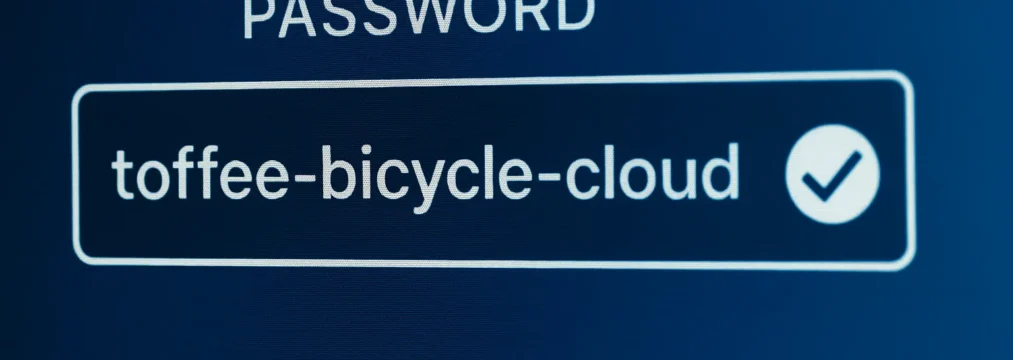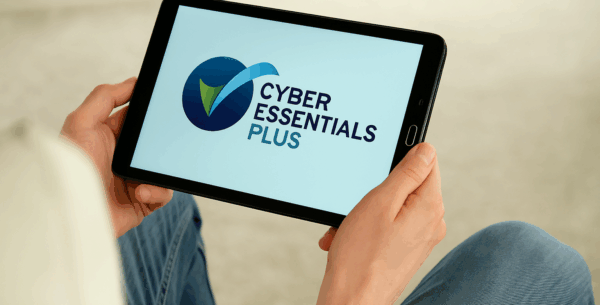Account Security: How to Protect Your Business From Hacks

How Can You Prevent Account Hacks?
Use strong, unique passwords, enable Multi-Factor Authentication (MFA), and avoid reusing login details across systems. Combine these with secure account management tools to significantly reduce your business’s risk of cyber attacks.
When cybercriminals go after businesses, they don’t start by smashing firewalls or decoding complex code.
They steal passwords.
Account security is often the weakest link in an organisation’s defences, and the most overlooked. Just one compromised login can unlock your email, your systems, even your customer data.
But here’s the good news: most account-based attacks are entirely preventable with a few simple, strategic habits.
In this guide, we’ll show you how to protect your business from one of the most common, and costly, cyber threats, including:
- What account security actually means (no jargon)
- How to create strong, unique passwords without the headache
- Why Multi-Factor Authentication (MFA) is your best friend
- What passkeys are and why they matter
- And a simple checklist to help you take action today
No scare tactics. No fluff. Just practical advice from people who help organisations stay secure, every single day.
What Is Account Security, and Why It Matters
Your account is how you sign in to systems like email, online services or your laptop. It usually has two parts:
- Your username (often an email address)
- Your password (known only to you)
That combination is your digital identity. When someone else gets access to it, they can impersonate you, steal data, access sensitive files, or worse, lock you out.
That’s why account security matters.
Strong Passwords: Your First Line of Defence
Think of your password like a secret key. If it’s weak, anyone can force the door.
Here’s how to create strong ones:
- Make it long – aim for at least 12 characters
- Avoid names, pets, or obvious patterns (like 123456 or Qwerty!)
- Use the “Three Random Words” method (e.g.
toffee-bicycle-cloud)
💡 Why this works:
- A 10-character password like
Tr0ub4d0r!could be cracked in weeks - A 20-character phrase like
toffee-bicycle-cloudmight take centuries
Long + memorable beats short + complex, and is easier to remember.

Don’t Reuse Passwords. Ever.
Using one password for everything? You’re not alone. But you are at risk.
Here’s why:
- If one site gets hacked, attackers try the same password elsewhere
- It’s called a “credential stuffing” attack, and it works
Use a different password for every account, and then use a password manager to store and generate them securely.
Think of it this way: one leak shouldn’t open every door.
Turn On Multi-Factor Authentication (MFA)
Even strong passwords can be stolen. MFA adds a critical second lock.
How it works:
- You enter your password
- You approve access with a second method (e.g. text code, fingerprint, phone app)
This means even if your password is compromised, attackers still can’t get in.
- Turn on MFA for email, Microsoft 365, banking, and any tool that supports it
- Use an authentication app (like Microsoft Authenticator or Google Authenticator) over text messages where possible
Prioritise High-Risk Accounts First
If the idea of fixing everything feels overwhelming, focus on the high-impact accounts first:
🔒 Your email
🔒 File storage (SharePoint, Dropbox, Google Drive)
🔒 CRM and finance tools
🔒 Admin-level user accounts
🔒 Supplier portals
If someone gains access to your email, they can reset passwords for almost everything else. Start there.
A Quick Recap: Smart Security Habits
Let’s keep it simple:
| Step | What to Do |
|---|---|
| 1 | Use long, strong passwords (Three Random Words) |
| 2 | Don’t reuse passwords |
| 3 | Use a password manager |
| 4 | Turn on MFA wherever possible |
| 5 | Start with your most critical accounts (email, banking, cloud systems) |
These steps take less time than you think, and will stop most account breaches before they happen.
Passkeys: The Future of Login
Passkeys are a new, more secure way to log in. No password required.
Instead, you confirm your identity using something you already have, like your face or phone.
Benefits:
- Harder to phish
- Easier to use (no typing!)
- Tied to your device, so harder to steal
Expect more services to offer passkeys soon. If you see the option, use it. It’s the future.

Bonus: Policy and Tools That Make It Stick
Security habits don’t stick unless your team knows what’s expected, and has the right tools.
We recommend every organisation has:
✅ A documented Password Policy
✅ Multi-Factor Authentication required by default
✅ Company-wide password manager licences
✅ Regular password reset rules (or better, breach monitoring tools like HaveIBeenPwned)
✅ User training on spotting phishing attacks
Need to implement this fast? Speak to our team. We can roll out secure tools, policies and training without disrupting your day-to-day.
Final Word: Small Changes, Big Protection
You don’t need to overhaul your entire business to improve account security. Just a few smart changes will drastically reduce your risk:
- Start with key accounts: email, cloud logins, financial systems
- Use strong passwords and MFA
- Get your team on board with secure habits
- Explore passkeys as they roll out
Account security isn’t a tick-box exercise. It’s your first and best defence against business-disrupting attacks.
Need support with putting secure systems in place? 👉 Explore our IT security services.
Or if you’re ready to go further, read our guide on how to write an AI Use Policy for another step in securing your future-facing systems.
Ready to strengthen your business & account security?
CYAN’s support includes everything you need to secure your accounts, your data, and your future.
Talk to us about securing your systems
